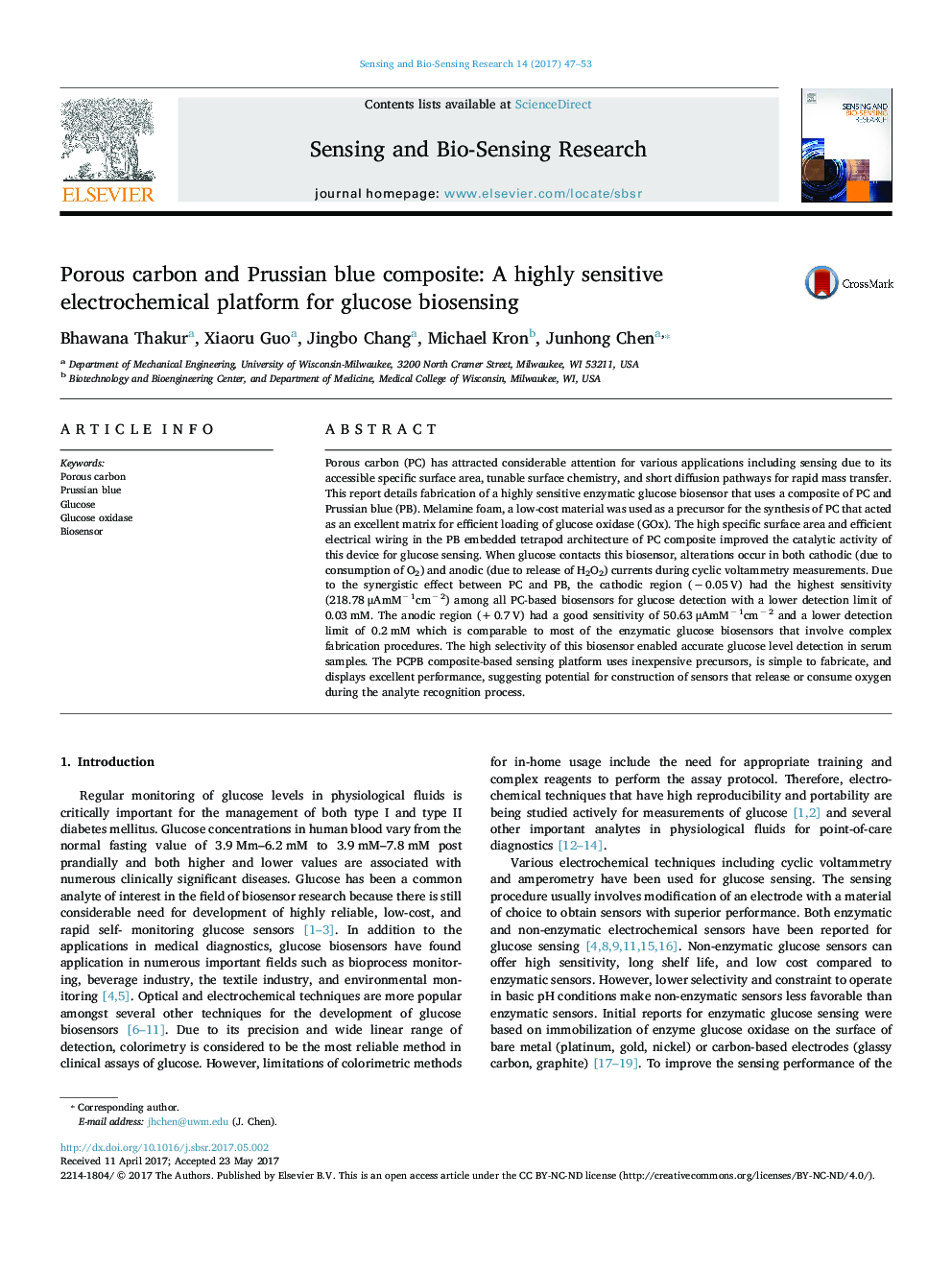| کد مقاله | کد نشریه | سال انتشار | مقاله انگلیسی | نسخه تمام متن |
|---|---|---|---|---|
| 5019660 | 1468284 | 2017 | 7 صفحه PDF | دانلود رایگان |
- A highly sensitive enzymatic glucose biosensor is fabricated.
- PC acted as an excellent matrix for efficient loading of PB and glucose oxidase.
- Synergistic effect between PC and PB results in high sensitivity and selectivity.
- The biosensor uses inexpensive precursors and is simple to fabricate.
Porous carbon (PC) has attracted considerable attention for various applications including sensing due to its accessible specific surface area, tunable surface chemistry, and short diffusion pathways for rapid mass transfer. This report details fabrication of a highly sensitive enzymatic glucose biosensor that uses a composite of PC and Prussian blue (PB). Melamine foam, a low-cost material was used as a precursor for the synthesis of PC that acted as an excellent matrix for efficient loading of glucose oxidase (GOx). The high specific surface area and efficient electrical wiring in the PB embedded tetrapod architecture of PC composite improved the catalytic activity of this device for glucose sensing. When glucose contacts this biosensor, alterations occur in both cathodic (due to consumption of O2) and anodic (due to release of H2O2) currents during cyclic voltammetry measurements. Due to the synergistic effect between PC and PB, the cathodic region (â 0.05 V) had the highest sensitivity (218.78 μAmMâ 1cmâ 2) among all PC-based biosensors for glucose detection with a lower detection limit of 0.03 mM. The anodic region (+ 0.7 V) had a good sensitivity of 50.63 μAmMâ 1cmâ 2 and a lower detection limit of 0.2 mM which is comparable to most of the enzymatic glucose biosensors that involve complex fabrication procedures. The high selectivity of this biosensor enabled accurate glucose level detection in serum samples. The PCPB composite-based sensing platform uses inexpensive precursors, is simple to fabricate, and displays excellent performance, suggesting potential for construction of sensors that release or consume oxygen during the analyte recognition process.
A highly sensitive enzymatic glucose biosensor based on composite of porous carbon (PC) and Prussian blue (PB) is reported. The biosensor uses inexpensive precursors, is simple o fabricate, displays excellent performance, and can be extended for sensing of other analytes for an apparent improvement in the electrochemical signal.72
Journal: Sensing and Bio-Sensing Research - Volume 14, June 2017, Pages 47-53
